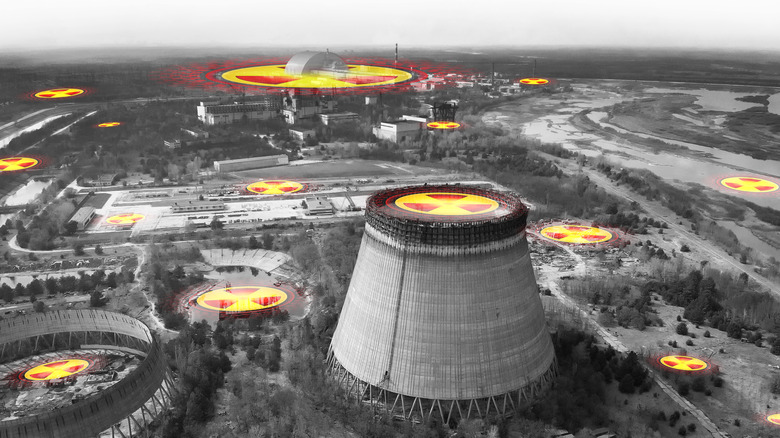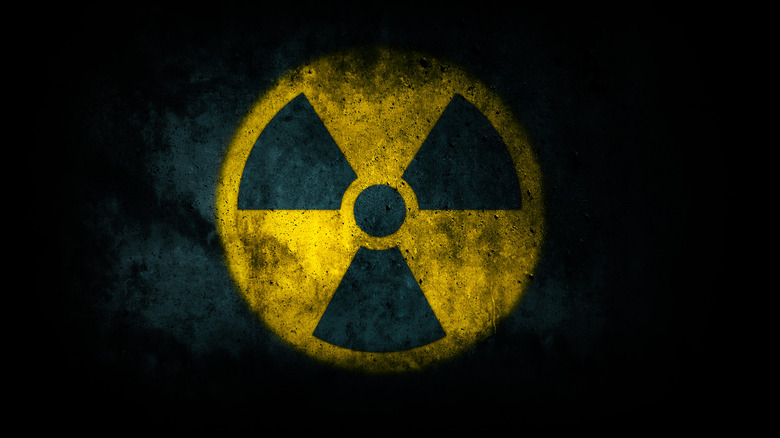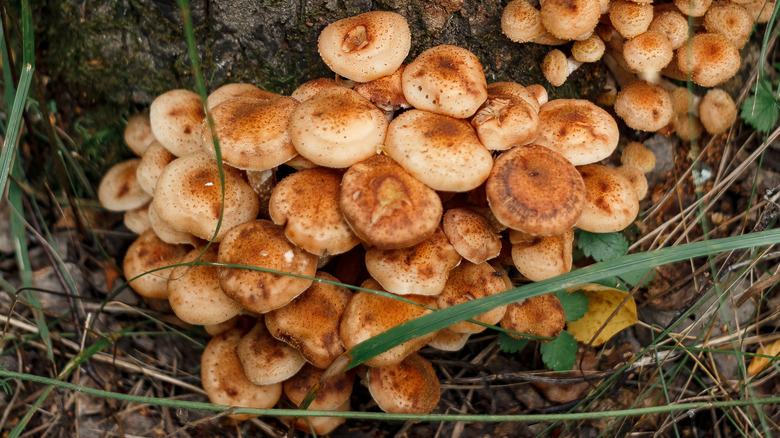How A Radiation-Eating Fungus Growing In Chernobyl Could Save Future Astronauts
On Saturday, April 26th 1986, one of the worst nuclear accidents in the history of the world occurred at the Chernobyl Nuclear Power Plant. Located close to the city of Pripyat in what was known as the Soviet Union (now the Russian Federation), the accident in reactor #4 at the Chernobyl Power Plant officially killed 31. Far worse than the initial 31 deaths, however, are the 4000 additional deaths that have been predicted to occur over the next few decades (via BBC). All due to the fact that the accident at Chernobyl has made the surrounding area unlivable to humans for at least 20,000 years (via Power Technology).
In fact, the 1,000 sq area surrounding Chernobyl, called the Exclusion Zone, is uninhabitable to most living creatures. Estimated that the radiation released during the accident at Chernobyl is 400 times greater than the radiation released by the atomic bomb dropped on Hiroshima (via IFLScience), engineer Oleksiy Breus, who arrived a Chernobyl hours after the accident occurred, described to the BBC the radiation poisoning early responders at the accident suffered: "When I finished my shift, my skin was brown, as if I had a proper suntan all over my body. My body parts not covered by clothes — such as hands, face, and neck — were red."
According to the World Nuclear Association, of the 237 people who were diagnosed with Acute Radiation Syndrome due to the accident, 28 people died within weeks of the meltdown. Meanwhile, the Mayo Clinic explains some of the side effects first responders suffered through including nausea and vomiting, fever, hair loss, and internal bleeding.
Fungus saving lives — again
Initially, scientists believed that the 1,000-plus acres surrounding Chernobyl would remain unfit for life for millennia — that is, until scientists discovered a fungus living within the radioactive territory. In 1991, scientists discovered a single-cell fungus living inside the reactor (via Science News Online). When learning of what would be called 'radiotrophic fungi,' microbiologist Arturo Casadevall began studying the newly discovered fungus. He was able to determine that not only was the fungus at Chernobyl living within the reactor, but it was thriving, as well. Casadevall discovered that the fungi within the reactor were using the radiation as food.
According to CNET, scientists have identified a strand of the radioactive fungus, called Cryptococcus neoformans. And while the fungus is normally a problem for people with autoimmune disorders, scientists have discovered the fungus may actually be beneficial to humans living in space.
Outer space is chock full of stuff that can easily kill unprotected humans. Among all the nasty particles that fill up the big black void out there is "space radiation." According to NASA, space radiation is way different than the radiation we're "used to" here on earth. It turns out that not only can no one hear you scream in space, but you won't know you're dying from space radiation, either. Comprised of cosmic rays, particles shot in space from solar flares, or just particles trapped in earth's magnetic field, scientists refer to this type of space radiation as "ionizing" radiation.
Enter the fungus
But what makes ionizing radiation so dangerous? It's due to our inability to effectively shield or protect against it (via NASA). While non-ionizing radiation, from sources like microwaves and radios, can be shielded against affecting the user, protection against ionizing radiation is a real problem. Not only can particles of ionizing radiation pass through nearly any kind of protection, those particles can also alter whatever it passes through. Which is bad for astronauts hanging out in space. Enter the Chernobyl fungus, aka Cryptococcus neoformans.
Cryptococcus neoformans contain large amounts of melanin (the compound that gives skin and hair its color). The fungus uses the melanin to absorb surrounding radiation and turns it into food. Scientists are now scheming of ways to use the very fungus found in the most dangerous nuclear accident in the world to protect astronauts from the very dangerous threat from space radiation.


